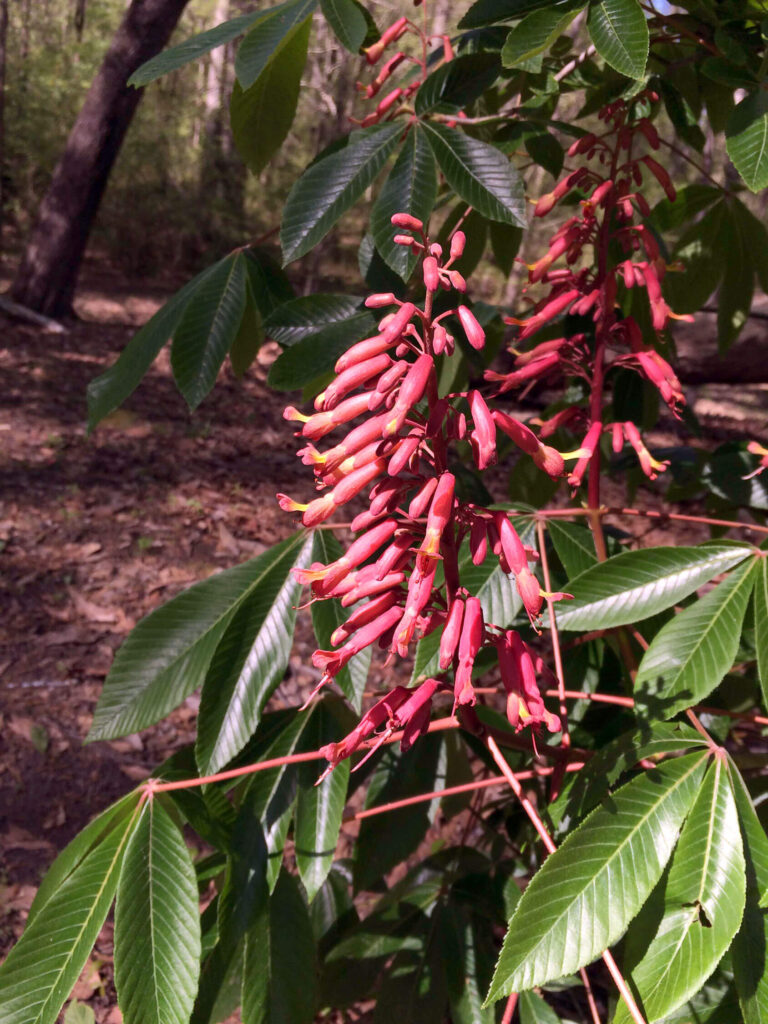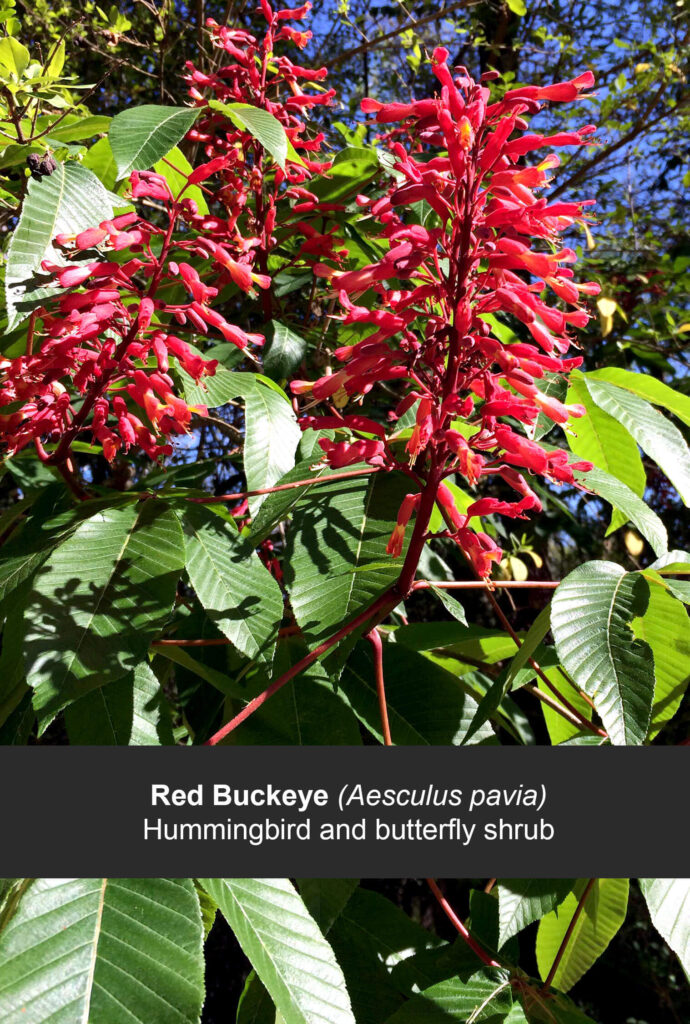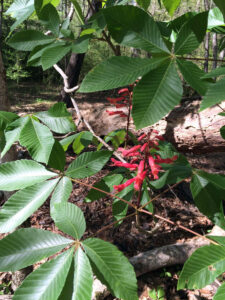Red buckeye (Aesculus pavia) has bright red flowers. The flowers of this native shrub are a favorite of hummingbirds and butterflies in early spring.
In the southeast, it blooms in late March and early April, and you can hear the hummingbirds buzzing around the blooms.
The red buckeye always catches my eye when it is blooming. These tall shrubs are usually covered in red blooms. This weekend there were many eastern black swallowtails in my area, and I saw them feeding on the tall red flowers.
Red Buckeye Hardiness Zone & Native Range
Red buckeye is hardy in zones 6A to 9A. It is native to the southeastern U.S.
Soil, Light, & Water Requirements
This shrub tolerates a wide range of soil conditions and moisture levels but does best in moist, well-drained soil.
It grows in part shade but can tolerate full sun as long as it gets afternoon shade. Red buckeye will produce more flowers when grown in full sun, but the afternoon sun will be harsh in warmer climates.
Height & Growth Rate
This is a tall shrub; some may consider it a small tree. It can grow to be 15-20 feet tall and equally wide. It has a moderate growth rate.
Leaves and Flowers
The leaves are palmately compound, meaning they have five leaflets arranged like the fingers of a hand. The leaflets connect to one stem, which is attached to the branch. Leaves are 5 and 10 inches across and oppositely arranged on the limbs. It is deciduous, meaning leaves fall off in autumn.
The flowers are between 3 to 8 inches long and are bright red. They are beautiful and, as one of the earliest bloomers in the spring, really show out in the forests and parks. Hummingbirds, bees, and butterflies love these flowers, and you will see them buzzing around.
The seeds of the buckeye are poisonous.

Wildlife Uses of Red Buckeye
Hummingbirds, bees, and butterflies love these flowers, and you will see them buzzing around. The flowers bloom during the hummingbird migration and are a valuable food source.
This shrub is deer resistant.
Propagating Red Buckeye
You can propagate this shrub from cuttings or seeds. The seeds don’t store well, so plant them as soon as the casings are starting to show cracks. They quickly grow.


